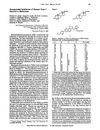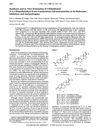Search
forLearn
5 / 7 resultslearn Osteopontin
signaling protein that, when suppressed, may grow hair by reducing inflammation and stem cell loss
learn Dutasteride
Heavy duty finasteride that comes with higher risks, but scalp injections seem safe and are gaining popularity
learn Finasteride
Frontline, gold standard treatment for combatting androgenic alopecia
learn Metformin
diabetes drug with anti-inflammatory, immunomodulatory, and insulin-sensitizing properties
Research
5 / 1000+ results
research Nonsteroidal Inhibitors of Human Type I Steroid 5α-Reductase
New compounds called benzoquinolinones may treat conditions linked to excess DHT.

research Synthesis and In Vitro Evaluation of 4-Substituted N-(1,1-Dimethylethyl)-3-Oxo-4-Androstene-17β-Carboxamides as 5α-Reductase Inhibitors and Antiandrogens
The new compounds moderately block a specific enzyme and strongly counteract a male hormone, suggesting potential for treating certain male-related health conditions.

research 5α-Reductase Inhibitors and Prostatic Disease
5α-Reductase inhibitors can help treat hair loss, acne, and prostate issues by reducing DHT levels.

research Alopecia: Unapproved Treatments or Indications
Many treatments for hair loss lack proper testing and FDA approval, so their effectiveness is uncertain.

research Mechanism of Action of Herbs and Their Active Constituents Used in Hair Loss Treatment
Some herbs and their components might help treat hair loss by affecting various biological pathways, but more research and regulation are needed.
Community Join
5 / 1000+ resultscommunity Is finasteride better than dutasteride?
Dutasteride reduces DHT more effectively than finasteride, but finasteride is more commonly used and approved for hair loss. Users have mixed opinions on dutasteride's effectiveness, with some experiencing better results and others facing side effects or no improvement.
community Dutasteride thins eyebrows and facial hair but doesn't stop scalp loss.
Dutasteride may not effectively stop scalp hair loss and can cause thinning of facial and body hair, including eyebrows. Users suggest considering other causes like autoimmune conditions or vitamin deficiencies and exploring treatments like finasteride or minoxidil.
community Topical Finasteride Doesn't Directly Reduce 5ar Enzyme on Scalp
Topical Finasteride doesn't directly reduce 5ar enzyme on scalp and has the same mechanism as oral, needing to go through the liver. Users debate the accuracy of this information and discuss various studies and experiences.

community Can I still save my hairline at age of 15?
A 15-year-old is concerned about hair loss, possibly at Norwood 2 or 3, and is using shampoos and conditioners recommended by a trichologist. Suggestions include considering topical minoxidil and consulting a doctor about topical anti-DHT treatments like finasteride or RU58841, but avoiding 5-alpha-reductase inhibitors at this age.

community FCE 28260: A Forgotten 5α-Reductase Inhibitor
FCE 28260 (PNU 156765), an under-explored 5α-reductase inhibitor, showcases promising results in research by Giudici et al., outperforming well-known treatments like Finasteride in reducing the conversion of testosterone to DHT. Its superior efficacy, demonstrated through lower IC50 values in both natural and human recombinant enzyme studies, suggests it could offer more effective management of DHT-related conditions. Additionally, its lower molecular weight hints at better potential for topical application, potentially offering advantages in treating conditions such as androgenic alopecia. Despite its potential, it has not advanced in development, possibly due to financial limitations, leaving its therapeutic prospects and side effect profile largely unexplored.